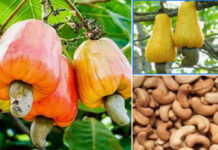Dorongo Dam, once a vital lifeline for communities within the Upper East Region, now lies barren, dried up entirely, leaving behind cracked soil and shattered dreams.
Located in the heart of the Upper East Region, the Dorongo Dam was once a symbol of hope and prosperity for surrounding communities.
Constructed in 1963, the dam served as a crucial source of water for irrigation, transforming the lives of farmers and residents alike. However, today, the dam lies barren, dried up entirely, leaving behind cracked soil and shattered dreams.
For decades, the Dorongo Dam played a crucial role in the livelihoods of people in the area. Farmers cultivated vegetables such as tomatoes, peppers, okra, and leafy greens, utilizing the water for irrigation during the dry season. The proceeds from these vegetables not only sustained families but also enabled many to improve their living standards, with some using the income for dowries and better homes.
However, with the dam now nothing more than a cracked expanse of earth, these opportunities have vanished, leaving community members disillusioned and vulnerable to social vices. Without adequate water for irrigation, farmers were forced to abandon their crops, leaving their fields barren and unattended. Some farmers have resorted to allowing their animals to graze on the abandoned farmland, exacerbating the loss of potential harvests.
“This year, a bag of pepper was between 2,500 cedis to 2,900 cedis. But sadly, that was the period when farmers under this dam were packing up because there was insufficient water for the crops. We invested so much in our farms, hoping for a good harvest, but now everything is lost. Without water from the dam, there’s nothing we can do. Our crops have withered, and we’re left with no choice but to let our animals graze on the land,” lamented Alex Abunga Abagna, Chairman of the Dorongo Farmers Association.
Adugpoka Adagyine, a widow who traded vegetable produce from the dam, recalls how thriving agricultural activities enabled her to provide for her children’s education. “The dam was our lifeline. It helped us send our children to school and secure a better future,” she said wistfully.
However, with the dam now dried up, Adugpoka and others like Mary Akulga find themselves incapacitated, struggling to make ends meet.
https://googleads.g.doubleclick.net/pagead/ads?gdpr=0&client=ca-pub-6034552436546687&output=html&h=343&adk=1054477651&adf=2521695509&pi=t.aa~a.2067693828~i.22~rp.4&w=412&abgtt=6&lmt=1714811398&num_ads=1&rafmt=1&armr=3&sem=mc&pwprc=4282796847&ad_type=text_image&format=412×343&url=https%3A%2F%2Fcitinewsroom.com%2F2024%2F04%2Fdry-dorongo-dam-leaves-farmers-in-despair%2F&fwr=1&pra=3&rh=319&rw=382&rpe=1&resp_fmts=3&sfro=1&wgl=1&fa=27&uach=WyJBbmRyb2lkIiwiMTMuMC4wIiwiIiwiU00tQTU0NkUiLCIxMjQuMC42MzY3LjgyIixudWxsLDEsbnVsbCwiIixbWyJDaHJvbWl1bSIsIjEyNC4wLjYzNjcuODIiXSxbIkdvb2dsZSBDaHJvbWUiLCIxMjQuMC42MzY3LjgyIl0sWyJOb3QtQS5CcmFuZCIsIjk5LjAuMC4wIl1dLDBd&dt=1714811397356&bpp=5&bdt=2441&idt=-M&shv=r20240501&mjsv=m202405010101&ptt=9&saldr=aa&abxe=1&cookie=ID%3Db9eedafc68994de5-229ae1be05e20015%3AT%3D1688019757%3ART%3D1714811396%3AS%3DALNI_MY74R4b5sE7TOnjsK03EBIo5SmpgA&gpic=UID%3D00000c7ab3d6c539%3AT%3D1688019757%3ART%3D1714811396%3AS%3DALNI_MY4Tva-H-kMCHLERBmHvyQvGKOd4Q&eo_id_str=ID%3D7583a6eda36a6d24%3AT%3D1707144369%3ART%3D1714811396%3AS%3DAA-Afjb6L4QL9PSSjU4bR2qRDyUR&prev_fmts=0x0%2C412x343%2C412x343&nras=2&correlator=4563407569101&frm=20&pv=1&ga_vid=1177674545.1688019758&ga_sid=1714811396&ga_hid=608906058&ga_fc=1&u_tz=0&u_his=1&u_h=892&u_w=412&u_ah=892&u_aw=412&u_cd=24&u_sd=2.625&dmc=8&adx=0&ady=3963&biw=412&bih=753&scr_x=0&scr_y=0&eid=44759875%2C44759926%2C44759842%2C95329831%2C95331983%2C31083323%2C95331042%2C31078663%2C31078665%2C31078668%2C31078670&oid=2&psts=AOrYGskgI0wwmBNi5Ajc7-7ROdk4tbEteDg4xhbzwTDM_1JfEPg9NLE484CcWxODGThheEPYzgLpI9CnIf5DIiv61ASh%2CAOrYGskKnOI7vuMOFLjbI5Mqb8RqCr5cBoXWBHZLwt2fGv7CMo4KNCQG3SyeLojhClVIHYdUUqh6hur5MqysqIa2KSi9Ag&pvsid=3033786048701377&tmod=1260988031&uas=0&nvt=1&ref=android-app%3A%2F%2Fcom.google.android.googlequicksearchbox%2F&fc=1408&brdim=0%2C0%2C0%2C0%2C412%2C0%2C412%2C753%2C412%2C753&vis=1&rsz=%7C%7Cs%7C&abl=NS&fu=128&bc=31&bz=1&td=1&psd=W251bGwsbnVsbCxudWxsLDNd&nt=1&ifi=4&uci=a!4&btvi=2&fsb=1&dtd=937
Many youths in the community found employment opportunities through vegetable cultivation, reducing unemployment and improving educational prospects. Among them is Aloliga Paul, a teacher, whose education was funded by proceeds from the dam.
However, with the dam now a cracked expanse of earth, he said, “Poverty will worsen, and youth will be forced to seek opportunities elsewhere, even if it means travelling to the southern part of Ghana in search of non-existent jobs.”
Despite numerous appeals to the government and benevolent organizations for assistance, little has been done to address the plight of the Dorongo community. The assemblyman for the Dorongo electoral area, Atugra Richmond, explains that community members have written letters and made requests to the government through the assembly, but all efforts have proved futile.
“We urgently need the government’s intervention to desilt the dam,” said Samson Akolgo, a youth. “It’s our only hope for restoring our livelihoods and ensuring food security for our families.”
During a visit to the dam by Citi News, the grim reality of the situation was evident. A dead cow lay nearby, a stark reminder of the desperation faced by both humans and animals in the area. Farmers believed the cow died of thirst due to the lack of water from the dried dam.
In response to the farmers’ appeal, the Municipal Chief Executive for Bolgatanga, Rex Asanga, declined to speak on tape but mentioned plans to desilt the dam using phase 2 of the SOCO project, provided there are sufficient funds.








